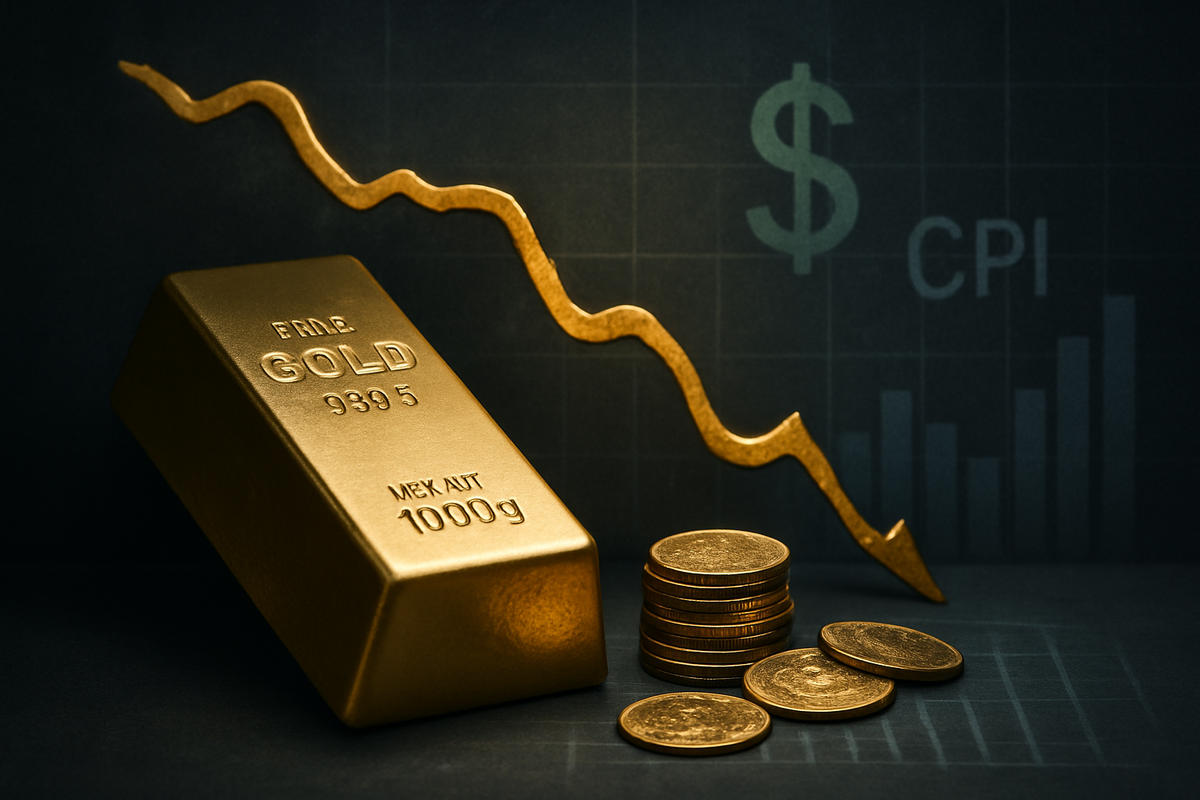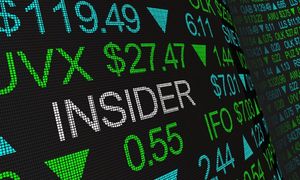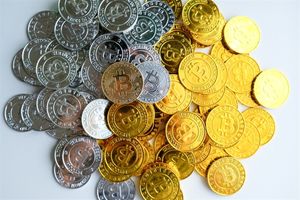
Gold prices have recently experienced a significant retreat after a historic surge to unprecedented levels, marking a pivotal moment for investors and the broader financial markets. This pullback, observed around October 21, 2025, is primarily attributed to a firming US dollar and widespread investor profit-taking following gold's meteoric rise. All eyes are now fixed on the upcoming US Consumer Price Index (CPI) data, expected later this week, which is poised to be a critical determinant of gold's short-term trajectory and potentially influence the Federal Reserve's monetary policy stance.
The precious metal's recent performance underscores its dual nature as both a safe-haven asset and a commodity sensitive to macroeconomic shifts. The current scenario highlights a market grappling with balancing the allure of record gains against the realities of a strengthening dollar and the anticipation of inflation data that could sway future interest rate decisions. This retreat, while sharp, is being viewed by some analysts as a "necessary tactical retreat" after an extraordinary rally, setting the stage for a period of heightened volatility and strategic re-evaluation among investors.
The Golden Correction: Unpacking the Recent Pullback
The recent gold price correction follows an impressive and sustained rally that commenced in late 2023, gained significant momentum throughout 2024, and accelerated dramatically into the current year. This culminated in spot gold hitting an all-time high of an astonishing $4,381.21 per ounce between October 19-20, 2025. Immediately after reaching this peak, the retreat began around October 21, 2025, as market dynamics shifted, prompting investors to adjust their positions and lock in substantial profits.
Several key factors converged to trigger this pullback. A primary driver has been the firming of the US dollar. As gold is denominated in the greenback, a stronger dollar makes the metal more expensive for international buyers holding other currencies, thereby dampening global demand. This dollar strength has been partly bolstered by a more conciliatory tone from the US regarding trade tensions with China, which can reduce global uncertainty and lessen the dollar's appeal as a safe haven. Historically, gold and the US dollar often exhibit an inverse correlation, meaning that a rising dollar typically exerts downward pressure on gold prices.
Furthermore, the sheer magnitude of gold's rally led to widespread investor profit-taking. After reaching record highs, many market participants seized the opportunity to sell off their holdings, securing the considerable gains accumulated over the past two years. This collective selling pressure was a significant catalyst for the price retreat, described by some analysts as a "healthy and expected development" after such an extraordinary run. Beyond these specific triggers, easing geopolitical tensions, particularly a more constructive approach to US-China trade relations, also diminished gold's appeal as a safe-haven asset, encouraging a shift towards higher-risk, higher-return investments.
Market Players: Winners and Losers in Gold's Volatility
The recent volatility in gold prices has immediate and significant implications for various market participants, particularly gold mining companies and investors holding gold-backed assets. While the record surge brought immense gains, the subsequent retreat poses new challenges and opportunities.
Gold mining companies, such as Barrick Gold (NYSE: GOLD) and Newmont (NYSE: NEM), typically benefit from higher gold prices, which boost their revenue and profitability. The sustained rally leading up to the $4,381.21 per ounce peak was undoubtedly a boon for these producers, potentially leading to increased exploration budgets and improved financial health. However, a sharp retreat, even if tactical, can temper investor enthusiasm and impact their stock valuations. While production costs remain relatively stable in the short term, a sustained decline in gold prices could squeeze margins, especially for higher-cost producers. Conversely, a strong dollar, while detrimental to gold prices, can sometimes benefit multinational mining companies by reducing the cost of their operations in non-dollar denominated regions.
For investors, the impact depends heavily on their entry and exit points. Those who invested early in the rally and took profits during the peak would be clear winners. However, late entrants or those who bought at or near the record highs might now be facing unrealized losses, prompting a re-evaluation of their positions. Gold-backed exchange-traded funds (ETFs), such as the SPDR Gold Shares (NYSEARCA: GLD), which track the price of physical gold, would mirror the metal's performance. A retreat in gold prices would directly translate to a decrease in the value of these ETFs, affecting a broad base of retail and institutional investors.
Broader Significance: Gold's Role in a Shifting Economic Landscape
Gold's recent surge and subsequent retreat are not isolated events but rather integral to broader macroeconomic trends and market sentiments. The extraordinary rally into 2025 was largely fueled by persistent inflation concerns, heightened geopolitical uncertainties, and expectations of a more dovish stance from central banks, particularly the Federal Reserve. Gold has historically served as a hedge against inflation and a safe haven during times of economic and political instability. The record prices reflected a period where these concerns were at their zenith.
The current retreat, therefore, signals a potential shift in these underlying dynamics. The firming dollar suggests a nuanced view of global uncertainty and potentially a recalibration of interest rate expectations. While inflation remains a concern, the market's intense focus on the upcoming CPI data indicates that future monetary policy decisions, specifically potential interest rate cuts, are heavily dependent on concrete inflation figures. A stronger dollar can also have ripple effects across other commodity markets, making dollar-denominated goods more expensive globally and potentially dampening demand. It also impacts currency markets, as a strong dollar typically means weaker performance for other major currencies.
Historically, gold markets have witnessed corrections after significant rallies. These pullbacks are often healthy, allowing the market to consolidate gains and re-establish more sustainable price levels. For instance, periods of rapid economic growth or aggressive monetary tightening have often led to gold retreats as investors favor riskier assets or yield-bearing instruments. The current scenario is distinct due to the confluence of a record surge, specific geopolitical shifts, and the critical role of upcoming inflation data, making it a complex yet fascinating case study in gold's enduring significance as a financial barometer.
What Comes Next: The CPI Catalyst and Future Scenarios
The immediate future of gold prices hinges critically on the upcoming US Consumer Price Index (CPI) data, which is anticipated to be released around Friday, October 24-25, 2025. This report is not just a data point; it is a potential catalyst that could determine gold's short-term direction and influence the Federal Reserve's monetary policy considerations.
Market forecasts suggest that annual US inflation (CPI) is expected to show an increase to 2.9% from the previous 2.7%, while core CPI is projected to remain steady at 3.3% year-over-year. The reaction of gold prices will largely depend on how the actual figures deviate from these expectations. If the CPI data comes in stronger than anticipated, indicating persistent inflationary pressures, it would likely bolster the US dollar. A stronger dollar, as discussed, tends to exert downward pressure on gold prices. Furthermore, robust inflation figures could lead the Federal Reserve to reconsider or delay any expected interest rate cuts, which would further support the dollar and weigh on non-yielding assets like gold. In this scenario, gold could experience further retreats as its appeal as an inflation hedge might be overshadowed by the opportunity cost of holding it compared to higher-yielding assets.
Conversely, a weaker-than-expected CPI report would reinforce market expectations for Federal Reserve interest rate cuts. Lower interest rates reduce the opportunity cost of holding non-yielding assets such as gold, making it more attractive to investors. In this scenario, gold prices could find renewed upward momentum, potentially recovering some of its recent losses. Beyond the immediate CPI reaction, the long-term outlook for gold will continue to be shaped by global economic growth, geopolitical stability, and the ongoing debate surrounding inflation and central bank policies. Investors will need to closely monitor not just the CPI figures, but also the subsequent commentary from central bank officials and broader market sentiment.
The Golden Outlook: Navigating a Period of Uncertainty
Gold's recent retreat after its record surge marks a significant moment in the financial markets, underscoring the dynamic interplay between safe-haven demand, currency strength, and inflation expectations. The key takeaway from this event is the heightened sensitivity of gold prices to macroeconomic data, particularly the upcoming US CPI report, which is poised to be a pivotal market mover. The firming dollar and investor profit-taking served as immediate triggers, but the underlying narrative remains one of cautious anticipation regarding the future path of inflation and interest rates.
Moving forward, the market will be closely assessing the implications of the CPI data for the Federal Reserve's monetary policy. A hawkish interpretation could lead to further dollar strength and exert continued pressure on gold, while a dovish outlook might provide the impetus for a rebound. Investors should prepare for a period of potential volatility, where gold's price movements are likely to be dictated by data releases and central bank rhetoric. The enduring significance of gold as a hedge against uncertainty and a store of value will continue to be tested against the backdrop of evolving economic conditions.
For investors, the coming months will require a nuanced approach. Diversification and a clear understanding of personal risk tolerance will be paramount. Watching for consistent trends in inflation data, changes in central bank forward guidance, and shifts in geopolitical landscapes will be crucial. While the immediate focus is on the CPI, the broader picture of global economic stability and the ongoing debate over the long-term inflationary environment will ultimately shape gold's lasting impact and its role in investment portfolios.
This content is intended for informational purposes only and is not financial advice






